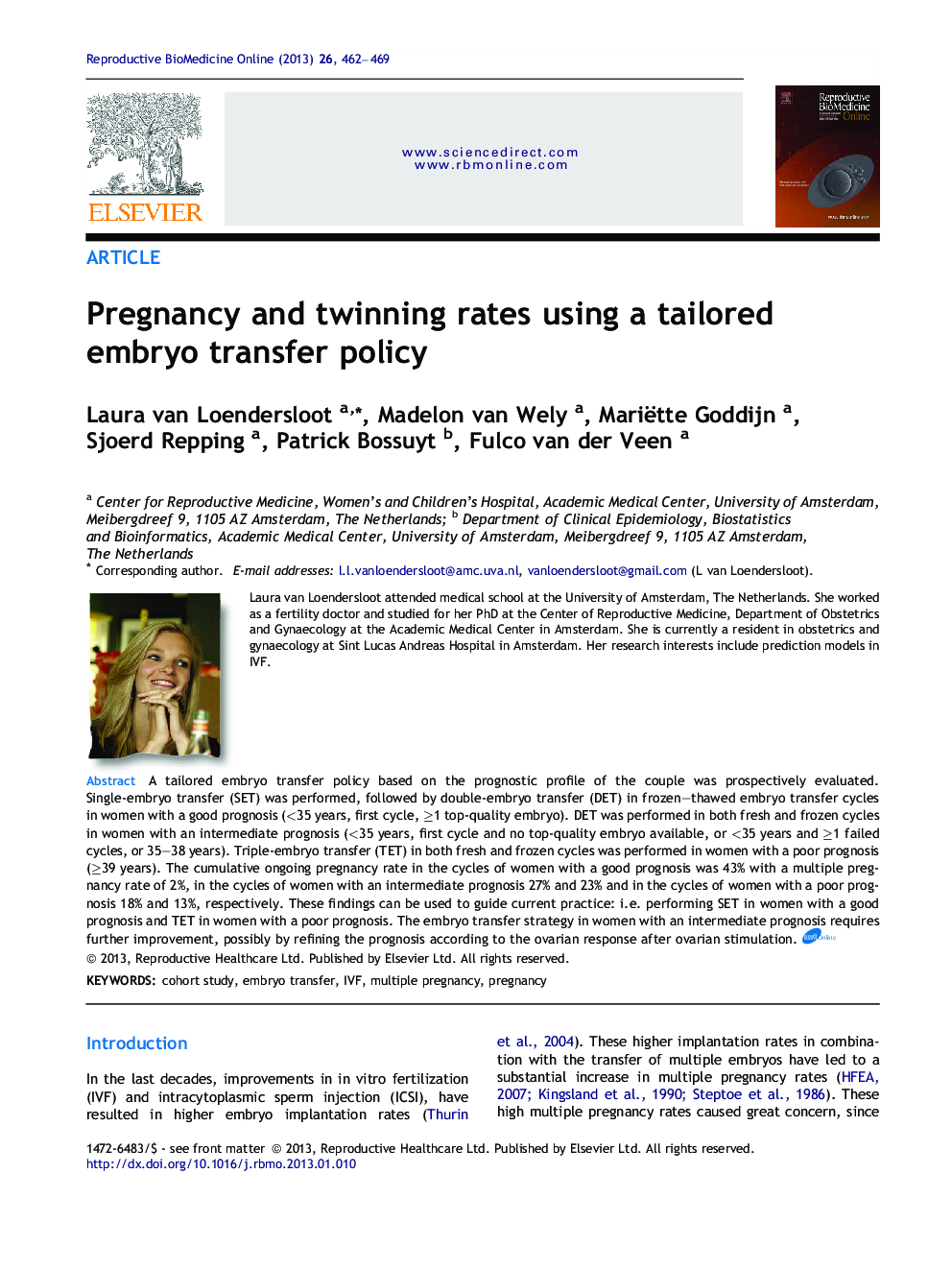| Article ID | Journal | Published Year | Pages | File Type |
|---|---|---|---|---|
| 6189119 | Reproductive BioMedicine Online | 2013 | 8 Pages |
A tailored embryo transfer policy based on the prognostic profile of the couple was prospectively evaluated. Single-embryo transfer (SET) was performed, followed by double-embryo transfer (DET) in frozen-thawed embryo transfer cycles in women with a good prognosis (<35 years, first cycle, ⩾1 top-quality embryo). DET was performed in both fresh and frozen cycles in women with an intermediate prognosis (<35 years, first cycle and no top-quality embryo available, or <35 years and ⩾1 failed cycles, or 35-38 years). Triple-embryo transfer (TET) in both fresh and frozen cycles was performed in women with a poor prognosis (⩾39 years). The cumulative ongoing pregnancy rate in the cycles of women with a good prognosis was 43% with a multiple pregnancy rate of 2%, in the cycles of women with an intermediate prognosis 27% and 23% and in the cycles of women with a poor prognosis 18% and 13%, respectively. These findings can be used to guide current practice: i.e. performing SET in women with a good prognosis and TET in women with a poor prognosis. The embryo transfer strategy in women with an intermediate prognosis requires further improvement, possibly by refining the prognosis according to the ovarian response after ovarian stimulation.We performed a prospective cohort study evaluating the implementation of the transfer of one embryo in women with a good prognosis, two embryos in women with an intermediate prognosis and three embryos in women with a poor prognosis. In women with a good prognosis (women <35 years, the first cycle and at least one top-quality embryo available), one embryo was transferred followed by two embryos in frozen-thawed embryo transfer cycles. In women with an intermediate prognosis (women <35 years, first cycle and no top-quality embryo, or women <35 years with ⩾1 failed cycle, or women aged 35-38 years), two embryos were transferred in both fresh and frozen-thawed cycles. In women with a poor prognosis (⩾39 years), three embryos were transferred in both fresh and frozen-thawed cycles. In women with a good prognosis, the pregnancy rate after a fresh and subsequent frozen-thawed embryo transfer was 43%, with a multiple pregnancy rate of 2%. In women with an intermediate prognosis, the pregnancy rate was 27%, with a multiple pregnancy rate of 23%. In women with a poor prognosis, the corresponding rates were 18% and 13%. The data in this study can be used to guide current practice, by transferring one embryo in women with a good prognosis and three embryos in women with a poor prognosis. The embryo transfer strategy in women with an intermediate prognosis requires further improvement, possibly by refining the prognosis according to the ovarian response after ovarian stimulation.
